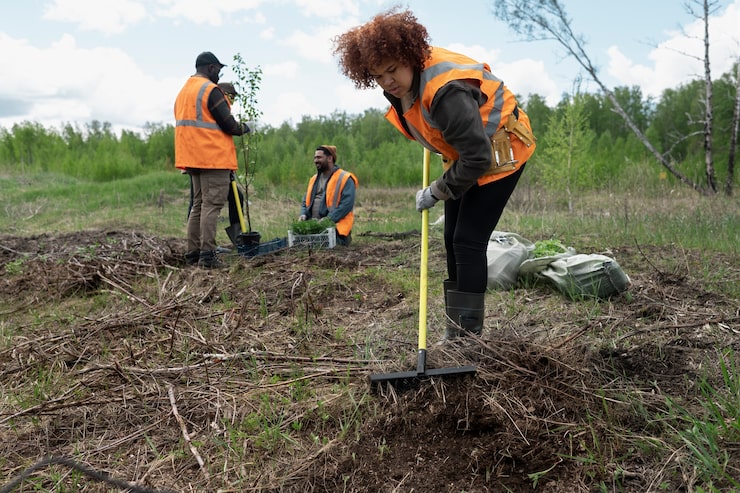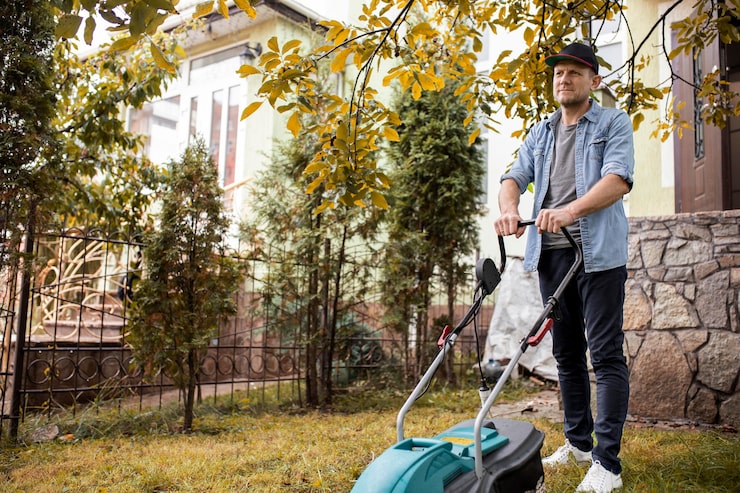How Much Does Land Clearing Cost in Dahlonega, GA?

Bush Hogging vs Mowing: Which Is Better for Dahlonega Properties?
October 13, 2025Land clearing costs in Dahlonega vary based on multiple factors that affect both labor and equipment requirements. Property owners planning construction, farming, or land development need accurate cost estimates to budget appropriately. Knowing about the pricing structures and the variables that influence final costs helps you plan your project effectively.
Average Cost Ranges for Land Clearing
Most land clearing projects in Dahlonega cost between $1,500 and $5,000 per acre. This range accounts for typical properties with moderate vegetation and accessible terrain. Light clearing of sparse vegetation may cost as little as $500 per acre, while heavy clearing with large trees and dense undergrowth can exceed $6,000 per acre.
Per-acre pricing decreases as project size increases. Clearing 10 acres costs less per acre than clearing a single acre due to equipment mobilization and efficiency gains. Small residential lots under one acre often see flat rates of $1,000 to $3,000 for the entire project.
Hourly rates range from $150 to $300 depending on equipment type and operator experience. Some contractors prefer hourly billing for projects with unknown conditions or obstacles. This pricing method protects both parties when underground utilities, hidden stumps, or rock outcroppings appear during work.
Vegetation Density & Type
The density of trees, brush, and undergrowth directly impacts clearing costs. Properties with light vegetation such as tall grass and scattered bushes cost $500 to $1,500 per acre. Medium density areas with small trees, thick brush, and saplings range from $1,500 to $3,000 per acre.
Heavy vegetation including large trees, dense hardwoods, and tangled undergrowth costs $3,000 to $6,000 per acre or more. Pine forests common in North Georgia clear faster than hardwood stands due to easier removal and lower wood density.
Tree diameter affects both time and equipment requirements. Trees under 6 inches in diameter come down quickly with standard forestry equipment. Trees measuring 12-24 inches require larger machinery and more careful removal. Specimens over 24 inches demand specialized equipment and significantly increase costs.
Terrain & Accessibility
Slope percentage influences equipment selection and safety requirements. Properties with slopes under 15 degrees clear at standard rates. Slopes between 15 and 30 degrees increase costs due to specialized equipment and slower work pace. Hillsides exceeding 30 degrees may require alternative methods such as hand clearing, doubling or tripling standard rates.
Dahlonega’s mountainous terrain creates accessibility challenges. Properties with paved or gravel road access cost less to clear than those requiring new access roads. Creating temporary access roads adds $2,000 to $5,000 to project costs depending on distance and terrain.
Rocky soil common throughout the area complicates stump removal and grading. Exposed bedrock or large boulders require additional equipment and time. Some properties need rock removal or breaking, adding $50 to $150 per hour for specialized equipment.
Stump Removal & Grinding
Stump removal adds significant costs to clearing projects. Grinding stumps 6-12 inches below ground level costs $2 to $5 per inch of diameter. A 20-inch stump costs $40 to $100 to grind, while a 48-inch oak stump may cost $96 to $240.
Complete stump extraction costs more than grinding but removes the entire root system. Extraction runs $150 to $500 per stump depending on size and root depth. This method works better for land development requiring deep excavation or foundation work.
Leaving stumps in place saves money upfront but limits land use options. Stumps prevent smooth grading, interfere with construction, and create obstacles for equipment. Most contractors include stump grinding in standard clearing quotes, but confirming this detail prevents surprise charges.
Brush & Debris Removal
Disposing of cleared material adds to project costs. On-site burning, when permitted and conditions allow, costs $300 to $800 per acre for supervision and fire safety measures. Lumpkin County regulations and air quality restrictions limit burning opportunities during certain seasons.
Hauling debris off-site costs $400 to $1,200 per acre depending on dump fees and hauling distance. This method works faster than burning but increases overall expenses. Some contractors include debris removal in per-acre rates while others charge separately.
Chipping brush and small trees costs $250 to $600 per acre. The resulting mulch can stay on-site for erosion control or be removed. Chipping reduces debris volume significantly, lowering disposal costs compared to hauling whole logs and branches.
Permit & Regulatory Costs
Lumpkin County requires permits for certain land clearing activities. Clearing more than one acre or working near waterways triggers erosion control requirements. Permits cost $100 to $500 depending on project scope and required inspections.
Environmental assessments may be necessary for properties near streams, wetlands, or protected habitats. These studies cost $500 to $2,000 and identify restrictions or mitigation measures. Protected species habitat or steep slopes near waterways increase regulatory requirements.
Utility location services cost $0 through Georgia 811, but delays waiting for utility marking can extend project timelines. Private utility locations for old or abandoned lines cost $200 to $500. Hitting underground utilities creates expensive repairs and project delays.
Equipment & Labor Requirements
Basic land clearing uses bulldozers, excavators, and forestry mulchers. Equipment rental costs $800 to $1,500 per day without operators. Hiring contractors with equipment included costs $150 to $300 per hour, covering both machine and operator.
Large projects benefit from multiple equipment types working simultaneously. Bulldozers push over trees, excavators load debris, and mulchers process brush. This efficiency reduces total project time but increases daily costs.
Labor costs in Dahlonega range from $25 to $50 per hour for ground crew members. Skilled equipment operators earn $40 to $75 per hour. Projects requiring 2-3 crew members plus equipment see all-in rates of $200 to $400 per hour.
Seasonal Pricing Variations
Spring and fall are peak seasons for land clearing in North Georgia. Dry conditions allow equipment access and reduce mud-related delays. Contractors charge premium rates during these busy periods due to high demand.
Winter clearing costs 10-20% less in many cases. Frozen ground supports heavy equipment better than wet soil, and deciduous trees lack leaves for easier visibility. However, weather delays and shorter days can extend project duration.
Summer clearing faces challenges from afternoon thunderstorms and high humidity. Burning restrictions during fire season eliminate that disposal option. Some contractors offer discounts for summer scheduling to maintain steady work.
Getting Accurate Estimates
Site visits provide more accurate quotes than phone estimates. Contractors need to assess vegetation density, terrain, access, and possible obstacles. Most offer free estimates for projects over $2,000.
Request quotes from three to five contractors. Compare not just prices but also services included, equipment types, insurance coverage, and project timelines. The lowest bid may exclude services other contractors include.
Ask about warranty coverage for issues discovered after initial clearing. Buried stumps, roots, or rocks that surface later can require additional work. Some contractors include a follow-up visit while others charge extra for additional services.
Clear communication about project scope prevents cost overruns. Specify exactly what areas need clearing, desired final grade, stump removal depth, and debris disposal method. Written contracts protect both parties and establish clear expectations.


